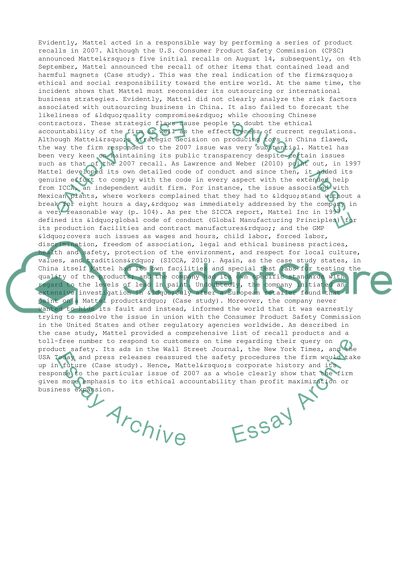Cite this document
(“Case study of 2007 Mattel toy recall Essay Example | Topics and Well Written Essays - 2000 words”, n.d.)
Case study of 2007 Mattel toy recall Essay Example | Topics and Well Written Essays - 2000 words. Retrieved from https://studentshare.org/business/1466477-case-study-of
Case study of 2007 Mattel toy recall Essay Example | Topics and Well Written Essays - 2000 words. Retrieved from https://studentshare.org/business/1466477-case-study-of
(Case Study of 2007 Mattel Toy Recall Essay Example | Topics and Well Written Essays - 2000 Words)
Case Study of 2007 Mattel Toy Recall Essay Example | Topics and Well Written Essays - 2000 Words. https://studentshare.org/business/1466477-case-study-of.
Case Study of 2007 Mattel Toy Recall Essay Example | Topics and Well Written Essays - 2000 Words. https://studentshare.org/business/1466477-case-study-of.
“Case Study of 2007 Mattel Toy Recall Essay Example | Topics and Well Written Essays - 2000 Words”, n.d. https://studentshare.org/business/1466477-case-study-of.


